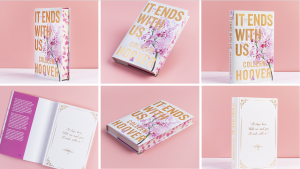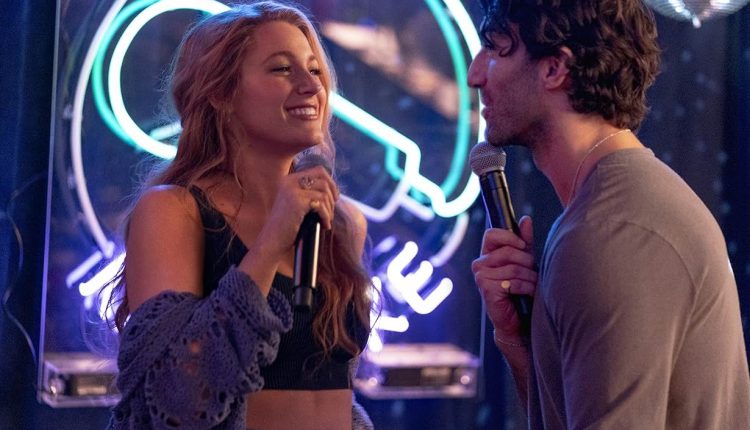When It Ends with Us, Two Loves Collide
Exploring the Controversial Adaptation of Colleen Hoover’s Best-Seller
It Ends with Us intricately weaves the story of Lily’s entanglement with two very different men: Ryle, the successful yet emotionally complex neurosurgeon, and Atlas, the embodiment of her first love and the memories she’s tried to leave behind. The movie, much like the book, delves into the complexities of love, trauma, and the difficult choices that come with them. Lily’s journey is not just about romance but also about breaking free from the cycles of her past and finding her own strength.
Blake Lively, who plays Lily, brings a depth to the character that reflects the turmoil and growth Lily experiences throughout the story. As she navigates her relationships with Ryle and Atlas, the film portrays her internal struggle with poignant sensitivity, drawing viewers into the emotional highs and lows that define her journey. The chemistry between Lively and her co-stars, Justin Baldoni and Brandon Sklenar, adds an additional layer of tension and connection that keeps the audience invested in Lily’s fate.
The Faces Behind the Story
The casting of It Ends with Us has been one of the most talked-about aspects of the film. Blake Lively, known for her dynamic roles in Gossip Girl and A Simple Favor, takes on the role of Lily Bloom. Her casting initially raised eyebrows due to her age, as Lily is portrayed as a younger woman in the novel. However, both Lively and the author, Colleen Hoover, have addressed this, emphasizing that the maturity brought by Lively’s portrayal adds depth to the character that was perhaps not fully explored in the book.
Justin Baldoni, who also directs the film, steps into the shoes of Ryle. Baldoni, known for his role in Jane the Virgin, brings a nuanced performance to the character, capturing Ryle’s charm and the darker sides of his personality. The role of Atlas is played by Brandon Sklenar, who adds another layer of complexity to Lily’s life as her first love returns to stir unresolved emotions.

In addition to the main cast, the film features Jenny Slate as Allysa, Ryle’s sister, who plays a crucial role in Lily’s life. Slate’s portrayal of Allysa brings warmth and a touch of humor to the story, providing a contrast to the more intense relationships in Lily’s life. The supporting cast, including Isabela Ferrer and Alex Neustaedter as the younger versions of Lily and Atlas, also contribute to the film’s emotional depth, giving audiences a glimpse into the formative experiences that shape the characters’ present-day lives.
Capturing the Spirit of the Novel
The movie, released on August 9, 2024, has been met with a mix of anticipation and apprehension, particularly from fans of the book. Hoover’s novel, while a massive commercial success, has been mired in controversy, particularly regarding its depiction of domestic violence. Critics of the book argue that it romanticizes toxic relationships, blurring the lines between love and abuse. This criticism has naturally followed the film, with many wondering how these delicate themes would be handled on screen. Director Justin Baldoni has been vocal about his intention to stay true to the spirit of the novel while also addressing its problematic elements. The film attempts to walk the fine line between portraying the reality of abusive relationships and avoiding the glamorization of such dynamics. Lively’s portrayal of Lily is central to this effort, as she brings a raw vulnerability to the role that highlights Lily’s internal struggle and eventual empowerment.
The film adaptation makes several choices that subtly shift the narrative from the book’s more controversial aspects. For example, scenes that in the book may have been interpreted as romanticizing Ryle’s behavior are given a more critical lens in the movie. The screenplay, co-written by Hoover and Baldoni, introduces moments of self-reflection for Lily that emphasize her growing awareness of the unhealthy patterns in her relationships. These changes, while subtle, make a significant difference in how the story is perceived on screen, potentially addressing some of the concerns raised by critics of the book.
The Controversy Continues
The release of the movie has reignited debates around the book’s themes. While some viewers appreciate the film’s effort to bring more awareness to the issue of domestic violence, others feel it still doesn’t do enough to condemn the behavior of Ryle, who is both a lover and a perpetrator. The character of Ryle is particularly contentious, as the film, like the book, shows him in a sympathetic light despite his abusive actions. This has led to discussions about whether the story inadvertently justifies or downplays the severity of domestic violence.
Atlas, on the other hand, is portrayed as the antithesis of Ryle—kind, understanding, and supportive. His presence in Lily’s life serves as a stark contrast to the turbulence she experiences with Ryle. However, some critics argue that this binary portrayal of good versus bad love oversimplifies the complexities of abusive relationships, reducing the narrative to a more digestible, yet less realistic, depiction.
The controversy surrounding It Ends with Us is not just about the story itself but also about the broader implications of how domestic violence is portrayed in popular media. Some advocacy groups have expressed concern that the film, despite its intentions, could perpetuate harmful stereotypes about victims of abuse. They argue that by showing Lily’s deep emotional attachment to Ryle, the story might suggest that love can overcome or excuse abusive behavior—a message that could be dangerous for audiences, especially young viewers who are still forming their understanding of healthy relationships.
The Cinematic Experience
Visually, the film is a treat, with its carefully crafted scenes and atmospheric cinematography. The use of color and lighting plays a significant role in conveying the emotional tone of the story, with brighter, warmer hues used during Lily’s moments of joy and darker, more muted tones during her struggles. The contrast in visual styles helps to underscore the duality of Lily’s experiences, reflecting the tension between her desire for happiness and the painful realities she faces.
The film’s score, featuring a mix of original compositions and popular songs, further enhances the emotional impact of the story. Taylor Swift’s “My Tears Ricochet,” which plays during the trailer, sets the tone for the movie’s exploration of love and loss. The music serves not only as a backdrop to the action but also as a narrative device, with lyrics that mirror Lily’s internal conflict and the choices she must make.
The film’s pacing, however, has been a point of contention. Some critics feel that the movie rushes through key moments, particularly the development of Lily and Ryle’s relationship, which might leave viewers who haven’t read the book feeling disconnected from the characters’ motivations. On the other hand, fans of the novel may appreciate the film’s faithfulness to the source material, despite the challenges of adapting such a complex story into a limited runtime.
The movie’s visual storytelling, while compelling, also leaves room for interpretation, inviting viewers to engage with the story on a deeper level. The symbolism throughout the film, from the recurring motif of flowers (Lily’s passion and profession) to the contrasting settings of her life with Ryle and Atlas, adds layers of meaning that enrich the viewing experience. These visual elements, combined with the strong performances, make It Ends with Us a film that resonates on both an emotional and intellectual level.

The Book Versus the Movie: A Comparative Reflection
Comparing the book to the movie reveals both strengths and weaknesses in each medium’s approach to the story. The novel offers a deeper exploration of Lily’s internal thoughts, providing readers with a more intimate understanding of her emotions and the difficult choices she faces. This depth is somewhat lost in the movie, where the focus is more on visual storytelling and the actors’ performances.
However, the movie has the advantage of bringing the story to life in a way that the book cannot. The physical portrayal of the characters, the settings, and the emotions are all enhanced by the medium of film, giving viewers a more immersive experience. The movie also benefits from the performances of its cast, particularly Blake Lively, whose portrayal of Lily adds a new dimension to the character that readers might not have imagined.
Yet, the controversy surrounding the book’s themes remains present in the movie. The criticisms about glamorizing domestic violence persist, with some arguing that the film, like the book, fails to fully address the gravity of Ryle’s actions. This has led to a broader conversation about the responsibility of filmmakers and authors in handling such sensitive topics, particularly when their work reaches a wide audience.
The film’s portrayal of domestic violence, while more nuanced than the book’s, still raises important questions about how such themes should be depicted in media. Some critics argue that by focusing on the love story between Lily and Ryle, the film risks overshadowing the more serious aspects of their relationship, such as the cycles of abuse that are often difficult to break. This has led to discussions about the role of storytelling in shaping societal attitudes toward domestic violence and the importance of ensuring that these narratives do not inadvertently normalize or excuse abusive behavior.
Final Thoughts: A Story That Sparks Debate
It Ends with Us is a story that continues to evoke strong reactions, whether in its original novel form or as a movie. The film adaptation, while visually stunning and bolstered by strong performances, cannot entirely escape the controversies that have plagued the book. For some, it’s a powerful story of resilience and the struggle to break free from the past. For others, it’s a problematic narrative that risks trivializing serious issues.
Regardless of where one stands, the film serves as a conversation starter, encouraging viewers to think critically about the portrayal of love, trauma, and abuse in popular media. As Lily Bloom’s story unfolds on the big screen, it challenges us to consider the complexities of human relationships and the ways in which art reflects and influences our understanding of these issues.

